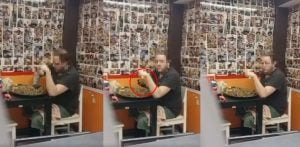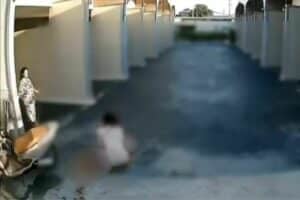Six month old girl’s unstoppable crying caused by 4cm hair embedded in foot

The persistent crying of a six month old girl was attributed to a 4-centimetre-long hair embedded in her foot. Her mother hurriedly took her to the hospital, where doctors were perplexed about how the hair became lodged. They cautioned against attempting to remove such foreign objects independently
The mother, a young woman from Hubei province, China, carried her six month old daughter to the Dermatology Department of Central Changsha Hospital after the infant would not stop crying post-bath. Despite attempts to soothe her, the child’s distress continued until the mother discovered a piece of hair buried in her daughter’s foot, prompting an urgent visit to the hospital to have it removed.
Local media reported that Zhang Chao, the Deputy Head of the hospital’s Dermatology Department, carefully inspected the child’s left foot after removing her shoes and socks. A hair, approximately 4 centimetres long, was visibly lodged beneath the skin on the front part of the child’s foot.
The hair was completely embedded under the skin, with the front end expanding into the skin between the second and third toes, causing a gap between the toes, which became red and showed signs of infection. Chao sterilised the child’s left foot before slowly pulling the hair out and sterilising the area again.
Doctor Chao explained to the child’s mother, Yuan, that the hair was able to penetrate the child’s skin due to the delicate and thin nature of an infant’s foot skin. If the hair is rigid and thick, and makes a certain angle with the skin, it can pierce the skin during friction and repeated squeezing.
If parents fail to detect the problem and the hair remains embedded in the skin for too long, the area may become chronically infected and inflamed, which, in severe cases, could necessitate surgical treatment.
In addition, he cautioned that if a foreign object gets embedded in an infant’s skin, it is advisable to go to a hospital and have it professionally removed. If it is removed without thorough sterilisation, it can easily lead to pus formation and infection, reported Sanook
Latest Thailand News
Follow The Thaiger on Google News:


























